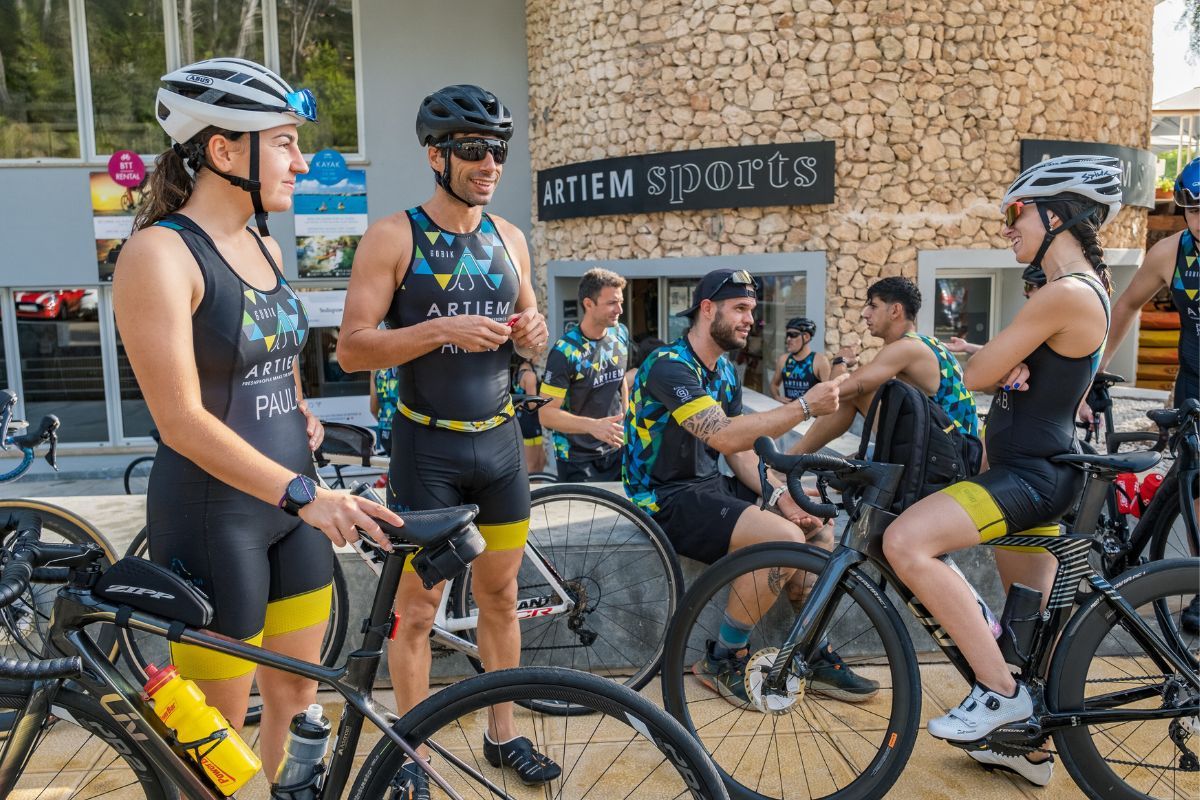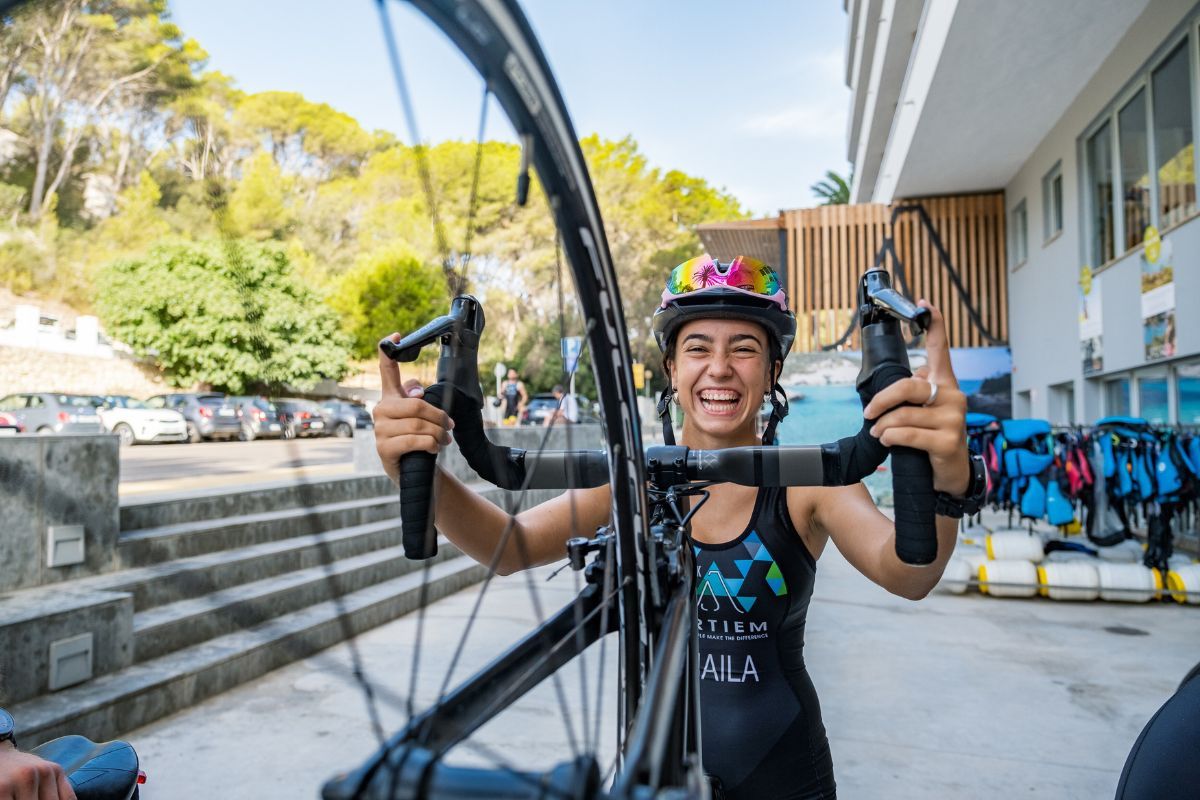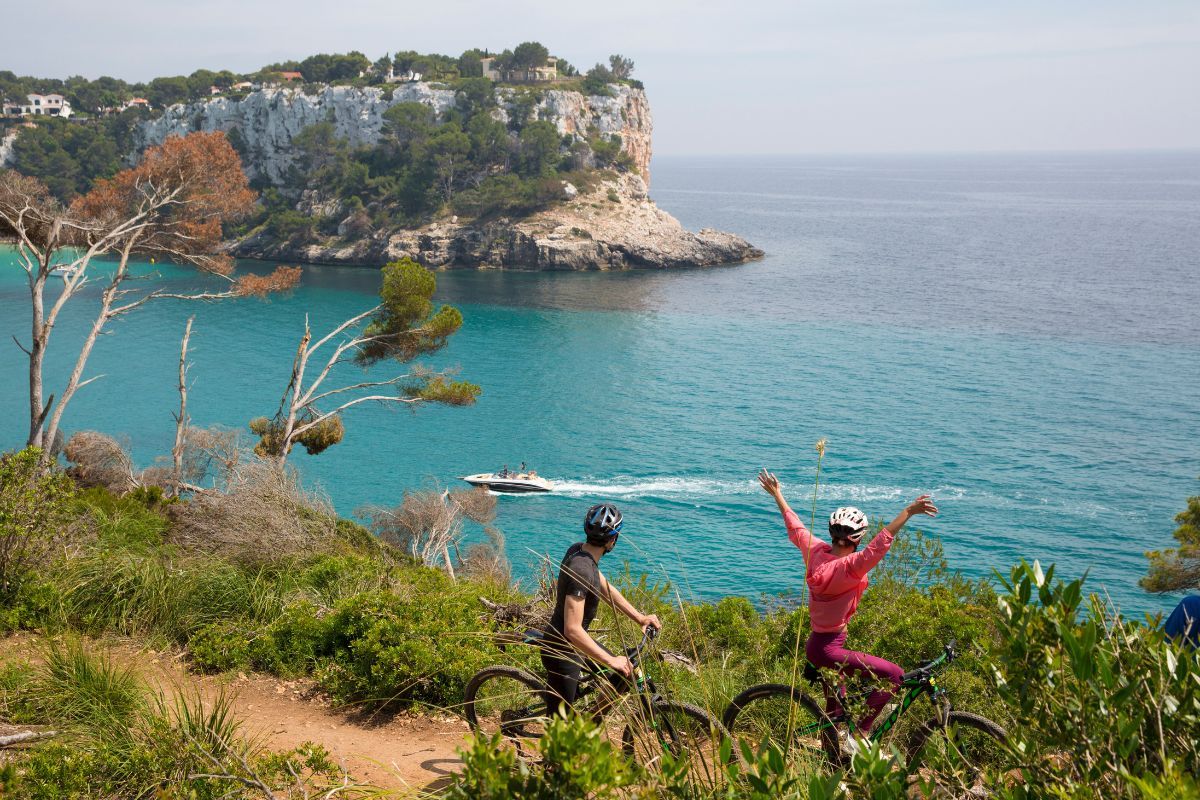This resistance is caused by three factors:
- Firstly: gravity, which makes it difficult to move forward when you are climbing, while helping you on the descents. It affects you when riding on the flat, but less so.
- The second factor is air resistance against the mass of cycle and cyclist.
- The third is rolling resistance. Friction of moving parts and tyre contact with the ground.
We are going to focus on the second and third factors, two points that can be improved with minor or major financial investment. Sometimes we spend a lot on things that may not be of great benefit, meanwhile neglecting other factors that for very little cost can be hugely beneficial.
When we talk about aerodynamics, the first thing that comes to mind are time trial bikes – ‘goats’, as we triathletes call them – with lenticular wheels and aerodynamic helmets. Having all this material at our disposal gives real benefits in terms of air resistance when you move forward. However, it may represent a big financial investment that you may not be able or willing to make.

We will consider a number of minor investments that can go a long way towards improving your aerodynamics:
- Firstly and most importantly: visit a biomechanist. The investment lies between €150 and €200, but they help you ride in the most aerodynamic posture possible while maintaining it over time. It is estimated that 80% of aerodynamic resistance is exerted by the cyclist as opposed to 20% by the bike. If you have the most aerodynamic bike on the market but you ride upright and uncoupled, it won’t do any good. So whether you ride a goat or a conventional road bike, find the most aerodynamic position you can maintain without losing pedalling efficiency with the help of a biomechanist. Then practise it on the road whenever you can. Try to improve your posture by gaining flexibility and endurance.
- Clothing is also a very important factor. Wearing close-fitting clothes makes your speed faster for the same effort. As far as possible avoid clothes that are too wrinkled or loose-fitting. It has also been shown that fabrics exert less air resistance than bare skin so being more covered up will help your speed. You should take the weather into account, not covering up too much to avoid feeling too hot later. It is difficult for a triathlete to control this aspect because once you get out of the water you are dressed in little but your trisuit and bare feet. Especially in short events. If you compete medium- or long-distance and plan to wear socks, in aerodynamic terms it is preferable to do so in T1 rather than T2. The same applies to your suit top. If it is sleeved and close-fitting, you will have a small aerodynamic advantage.
- The front panel is key. By this we mean the part of the bike-cyclist combination that hits the wind first. You should try to keep it as small as possible. To do so, you will have worked with a biomechanist to improve your posture. You should aim to keep all the front parts of your bike as tucked in as much as possible.
- Set the cycle computer to landscape.
- Gather all the cables you can. All derailleur and brake cables running in front of the bike should be as snug to the bike as possible. Tape them together to form one or two wires.
- On goats, try to keep hydration and feeding systems as hidden as possible. Use tape, cable ties or plastic to do so.
- Your helmet is an element that can help you improve your speed slightly for the same effort. When choosing a helmet, do not just consider its aerodynamic advantage; you should also look at its ventilation (very enclosed helmets can generate a lot of heat and energy loss). Remember too that some radical helmets for time trials require a specific posture to be effective, so consider whether you can hold that posture for a sustained period. A helmet costs between €100 and €300. It is important to choose the one that best suits you and the type of racing you do.
- The last point we would like to address in terms of aerodynamic material is the wheels. Good wheels can make a difference, but they cost much more. Profiles of 40–50 mm have been shown to be the most versatile in terms of performance on the flat and uphill. The ones with a wider profile hold you back on climbs, though perform slightly better on the flat. Note also that high front-wheel profiles can create steering problems in strong side winds. Good wheels cost between €1000 and €2500 so they are a great investment. In any case, if you are pondering whether to change your bike frame or wheels, I would not hesitate: change the wheels. Lenticular wheels are available for non-drafting races. The cost is high at €1500, whereas a good option are little-used covers, which fit the profile of wheels you already have. They cost about €200 and performance is similar to a lenticular wheel.

Rolling resistance is the other major factor about which we want to talk. Here you no longer have to adjust your body to the bike, though you have to care for it and pamper it so that everything runs smoothly.
- The first aspect to consider is the gears. There is a huge difference between clean, well-oiled gears and dirty ones. Keeping all these components clean and properly oiled does not cost money, it makes the bike faster and extends the life of the components. All wins.
- Keep the bearings in good condition. Here we are talking about the cassettes, wheel axles and pedal cranks. Much of the energy generated by the body in the forward movement can be lost through these points. If they are checked and well oiled they will work far better. If, furthermore, when it is time to change them, we fit ceramic ones (which cost a little more), they will generate less friction and last longer with less maintenance.
- The third point we want to address is tyres. They are the point where all the energy generated is transferred to the asphalt. Quality tyres with good grip will make much better use of this energy and allow for greater speed and safety. Also bear in mind that the wheels must constantly be accelerating, giving them energy. Therefore, the lower the wheel weight, the less energy is needed to accelerate the wheel. And the further out the weight is, the more it will cost. So, if you fit good, lightweight tyres, you will get a big improvement at a relatively low cost. Each quality tyre can be worth between €50 and €100. Remember that if you use a tube tyre, the tube should be light and good quality. It will also help transfer this energy while making the whole assembly lighter. A quality inner tube can cost between €5 and €10.

We hope these tips will serve as a guide when you are unsure where best to invest in your bike.
Good health and happy cycling!